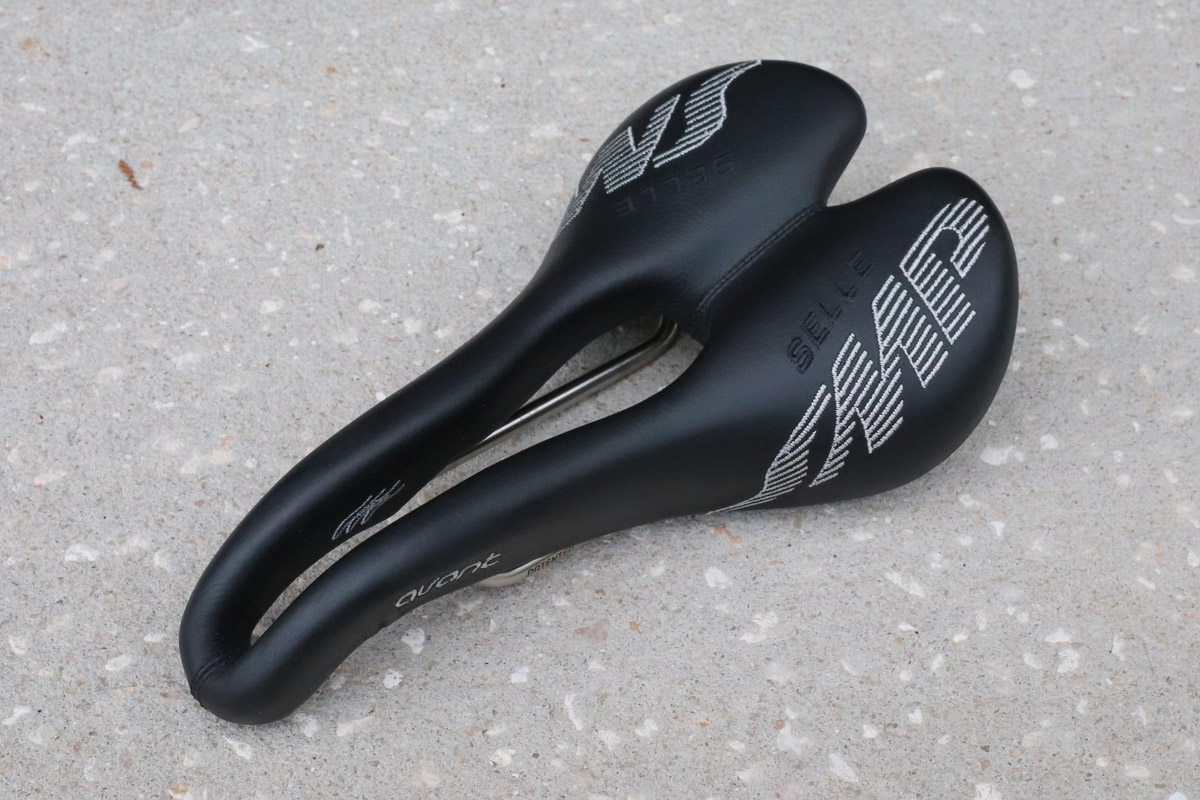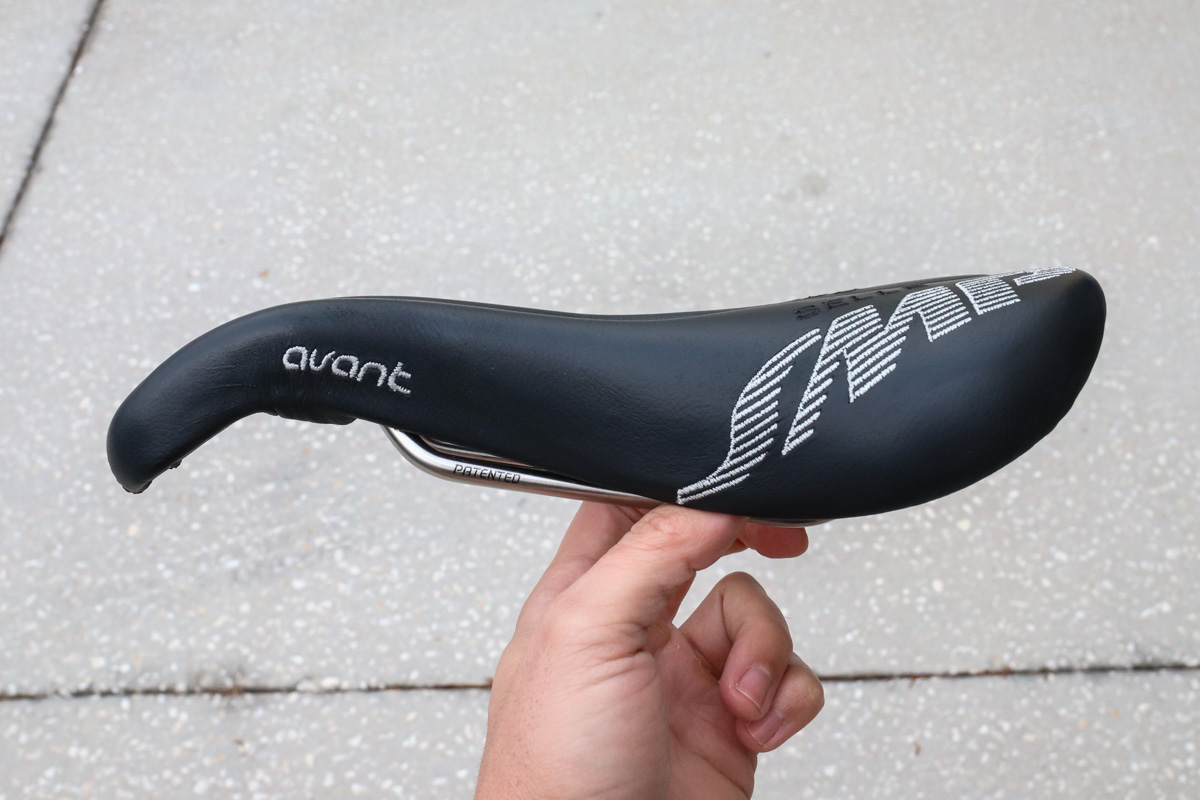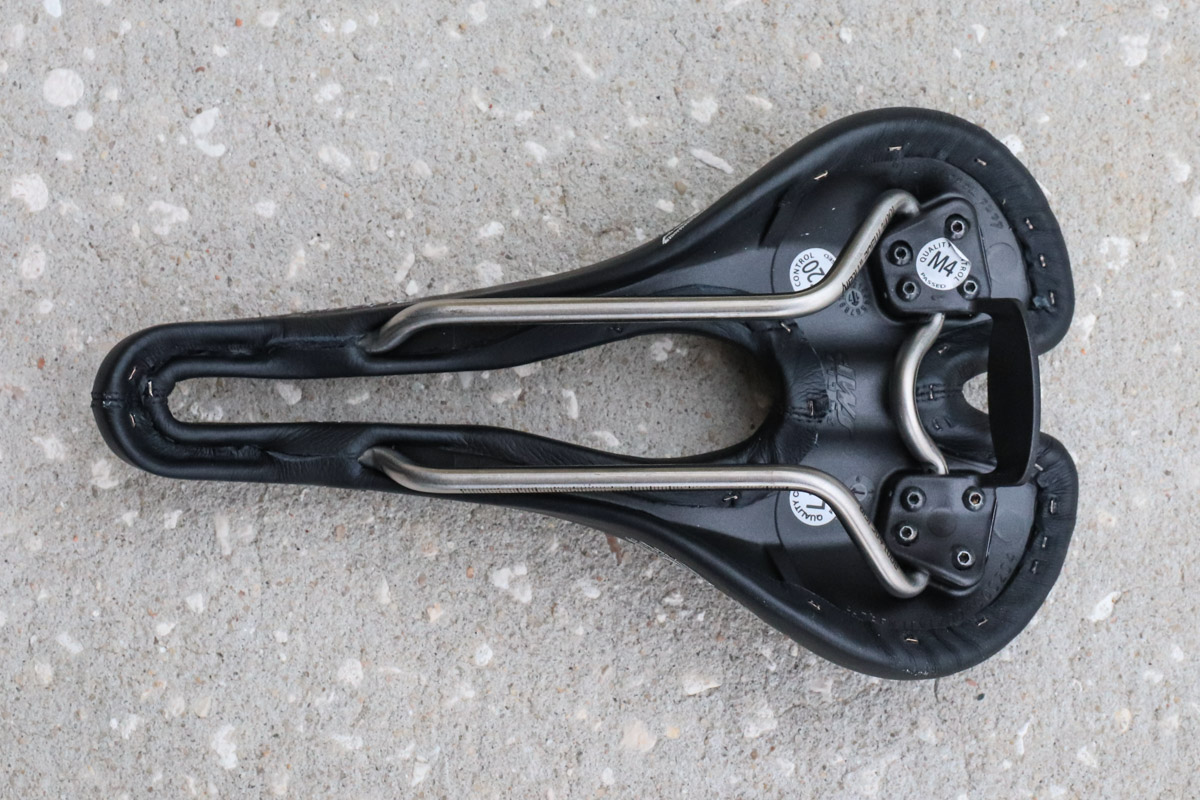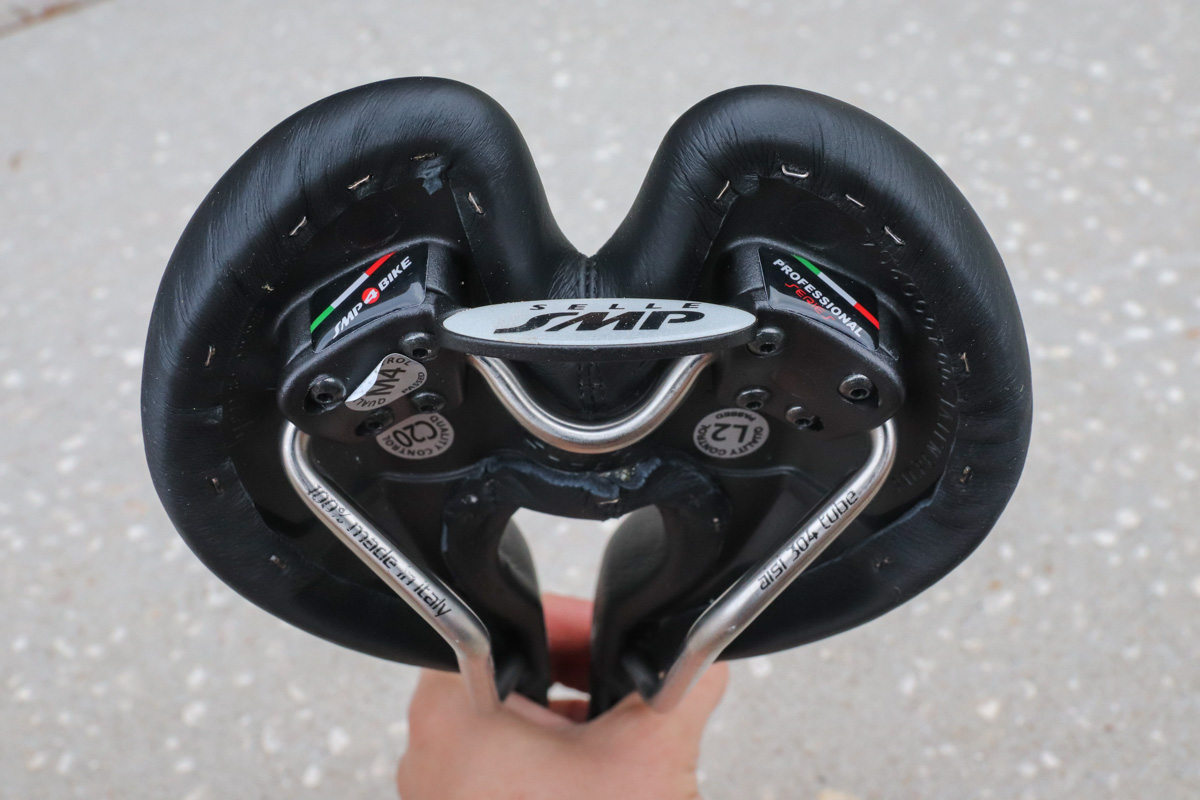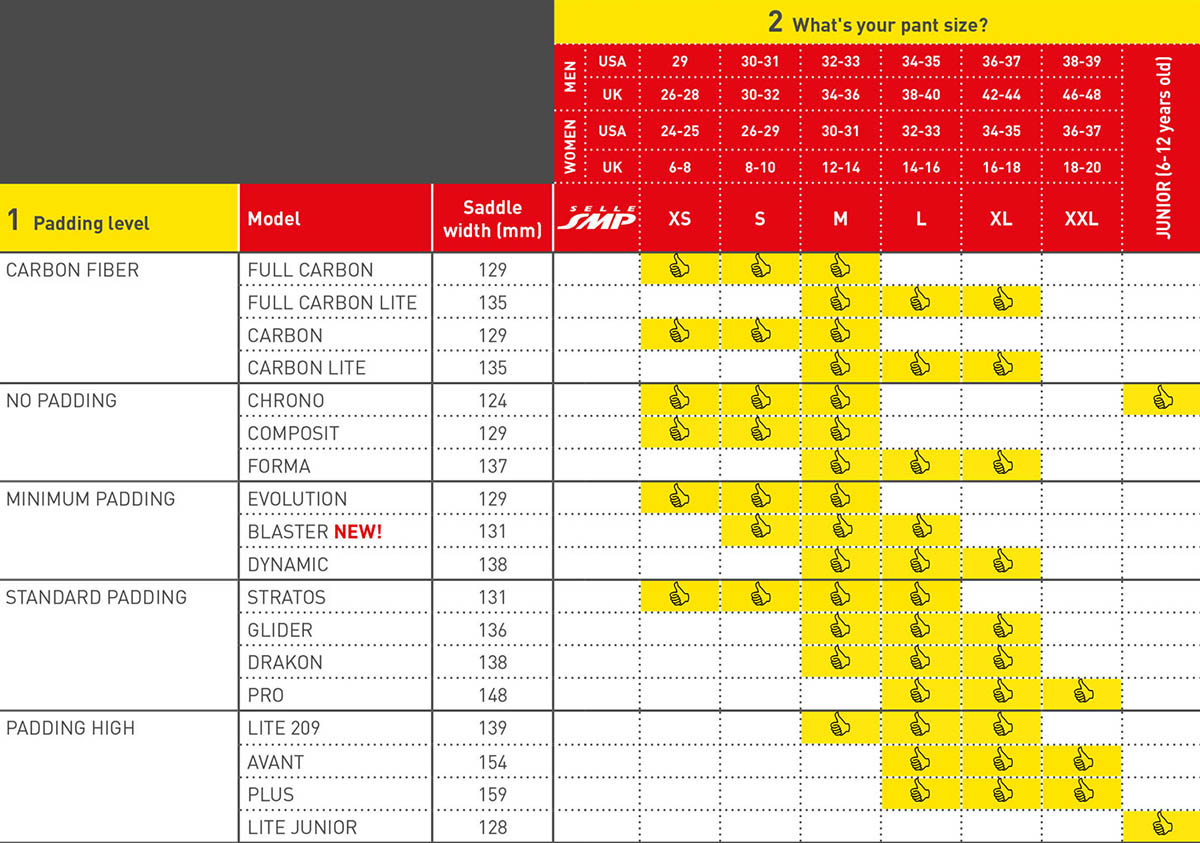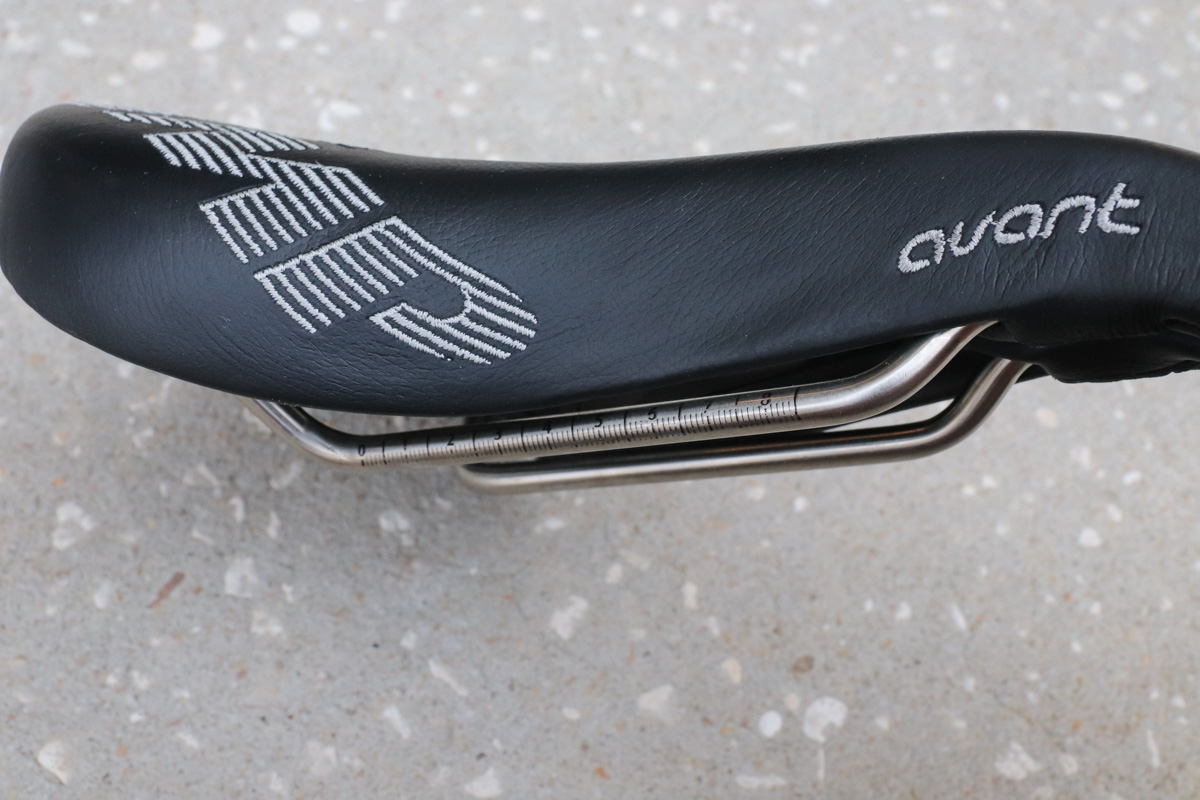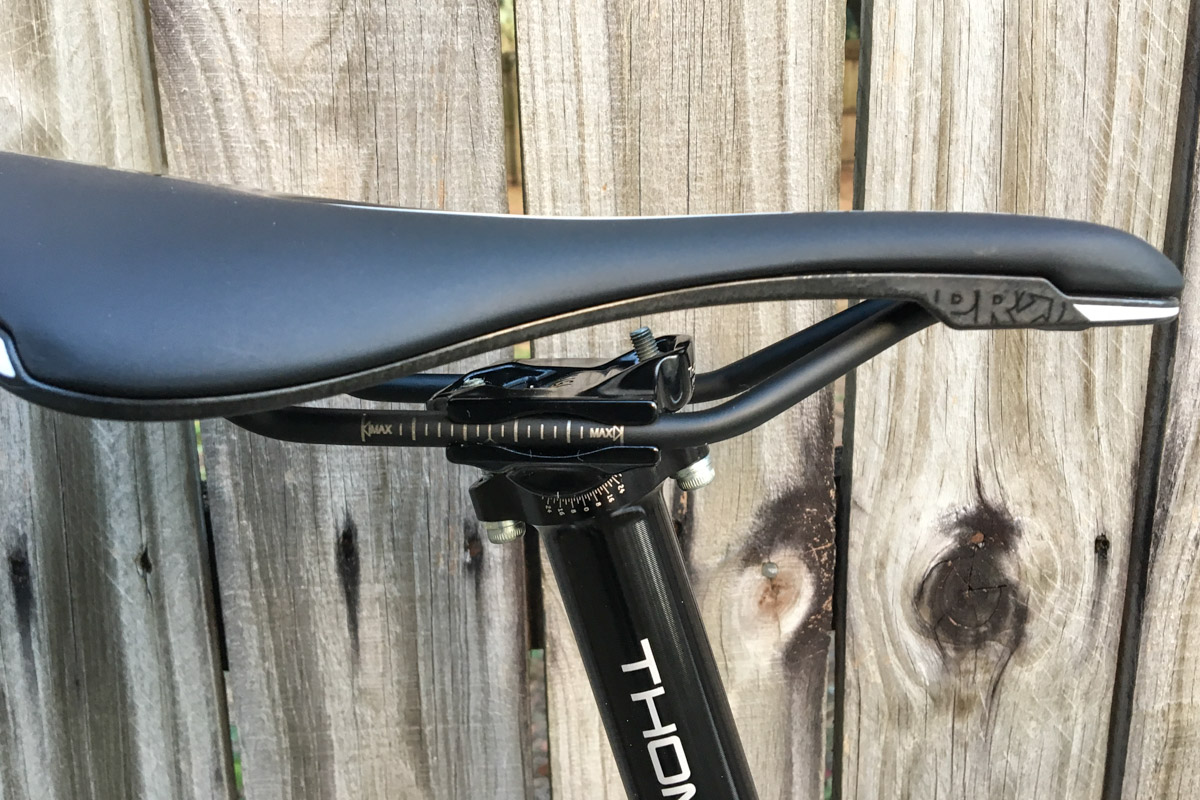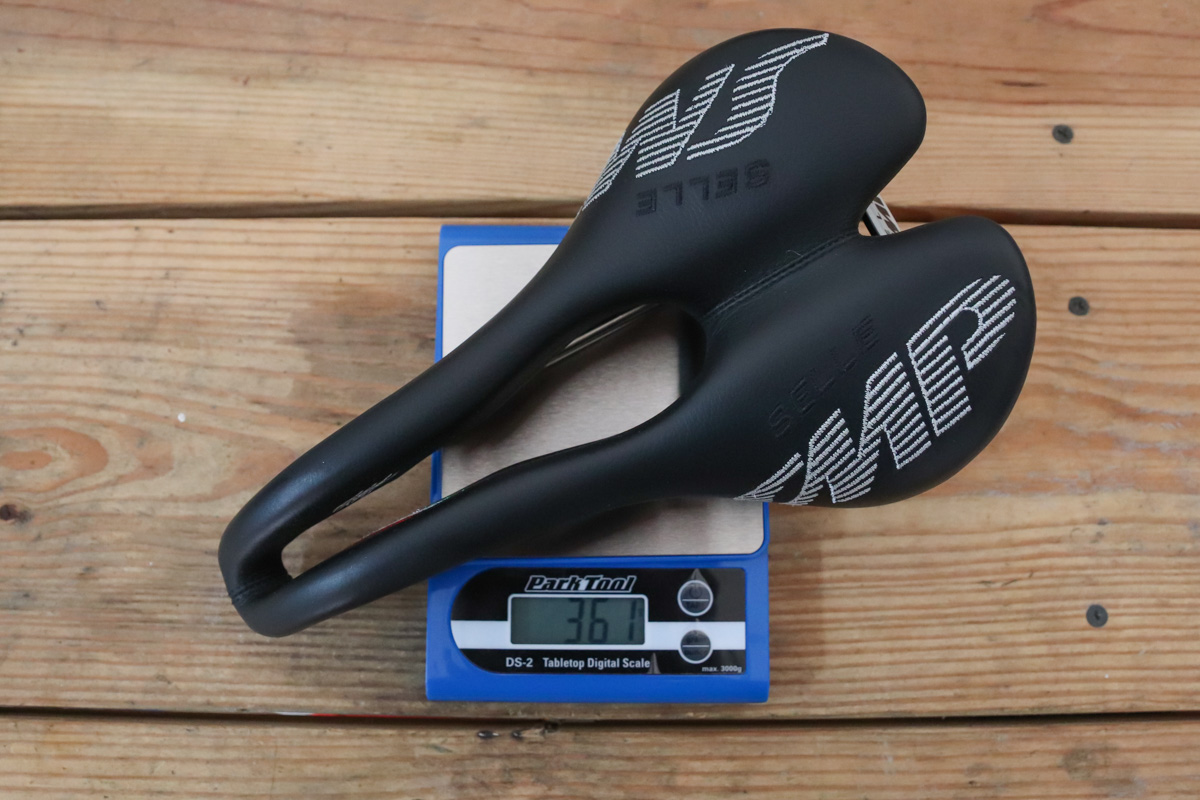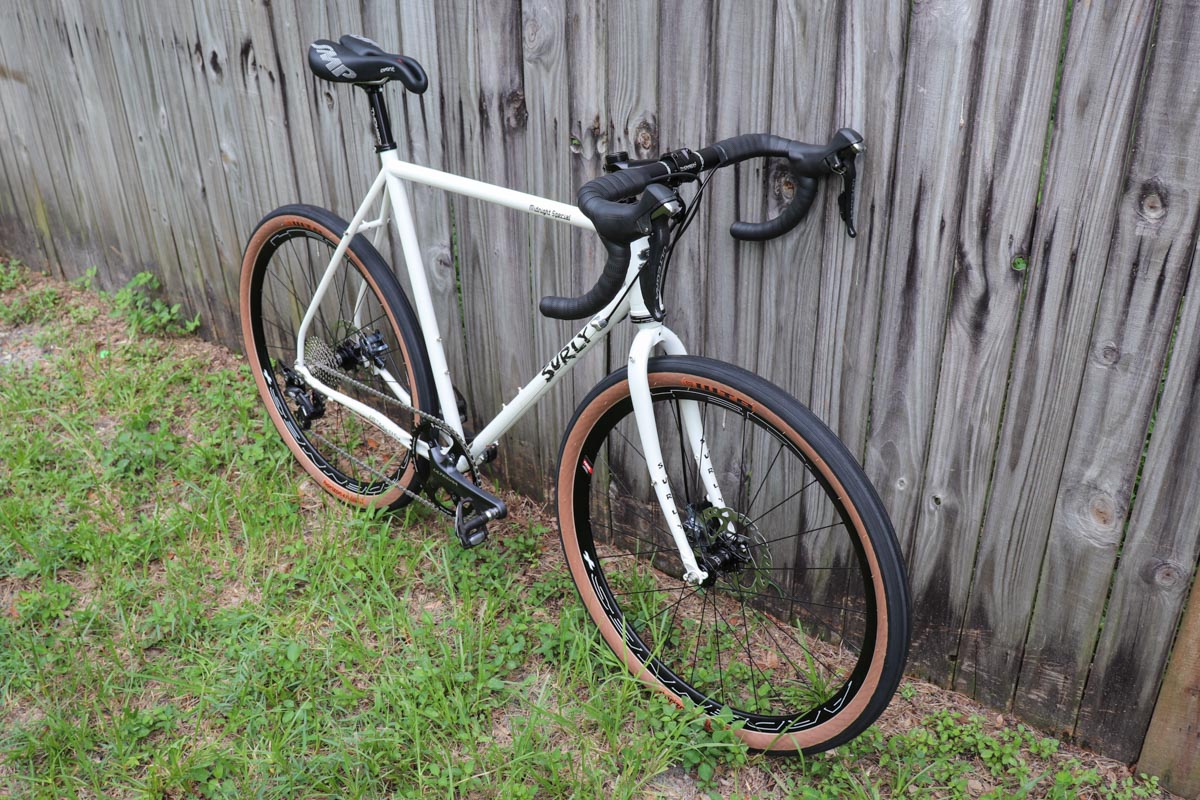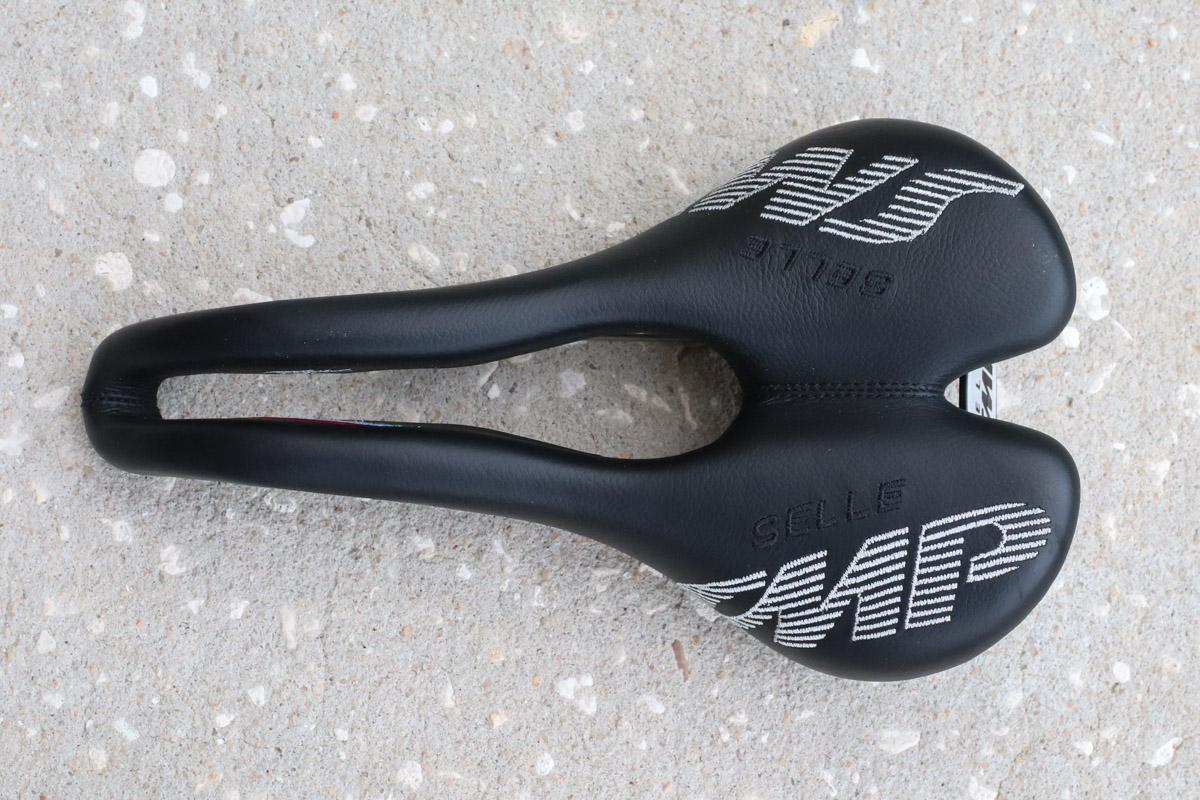The Selle SMP saddle design is hard to miss, with a unique profile, wide cutout, and their distinct “Eagle Beak” nose. While visual appeal is an individual preference, many are finding comfort on their anatomical saddles, finding a middle-ground between traditional-style saddles and full-on noseless designs. This is our long-term review of the popular Avant model after about six months of real-world use.
Selle SMP Avant anatomic road bike saddle review
You may be surprised (as I was) to learn that Selle SMP is actually the longest continuously-run saddle company in Italy. Founded in 1947, they produced what you’d call traditional-style saddles for the bulk of their history. That means no cutouts, anatomic shaping, or modern touches. Then in 2004, they effectively reinvented the company, giving the new saddles the distinct anatomic shape you see today. They have a long, wide cutout, curved shape, and distinct down-turned nose – called the “Eagle Beak tip”.
What the heck is an Eagle Beak tip? Traditional saddles can be associated with genital numbness and loss of blood flow, with the nose area often taking blame. As you rotate your hips forward to reach the handlebars and produce power, the front area of the saddle can compress soft tissue, nerves, and arteries – potentially leading to long-term health problems. Of course, the severity of this can depend on your posture, where you sit on the saddle, and how high you place your bars (read: in general, the more your hips rotate forward, the more you’re at risk).
Rather than remove the saddle nose like some brands, SMP opts to duck out of the way. Their representatives told me this if for two key reasons: 1) complete split-nose saddles suffer from a lack of structural integrity up front – sometimes causing the saddle to distort, and 2) the SMP design allows for longer rails and easier fit.
Those rails are made from a single piece, running continuously through the rear of the saddle. This adds a bit of weight, but improves the stiffness and strength of the saddle.
Selle SMP health claims
What does that cutout and funky shape get for you? SMP claims an 83% improvement in blood oxygen to the genitals compared to traditional saddles. SMP representatives also reported that this translates to no loss in blood flow, riding seated after a warmup period, compared to baseline levels.
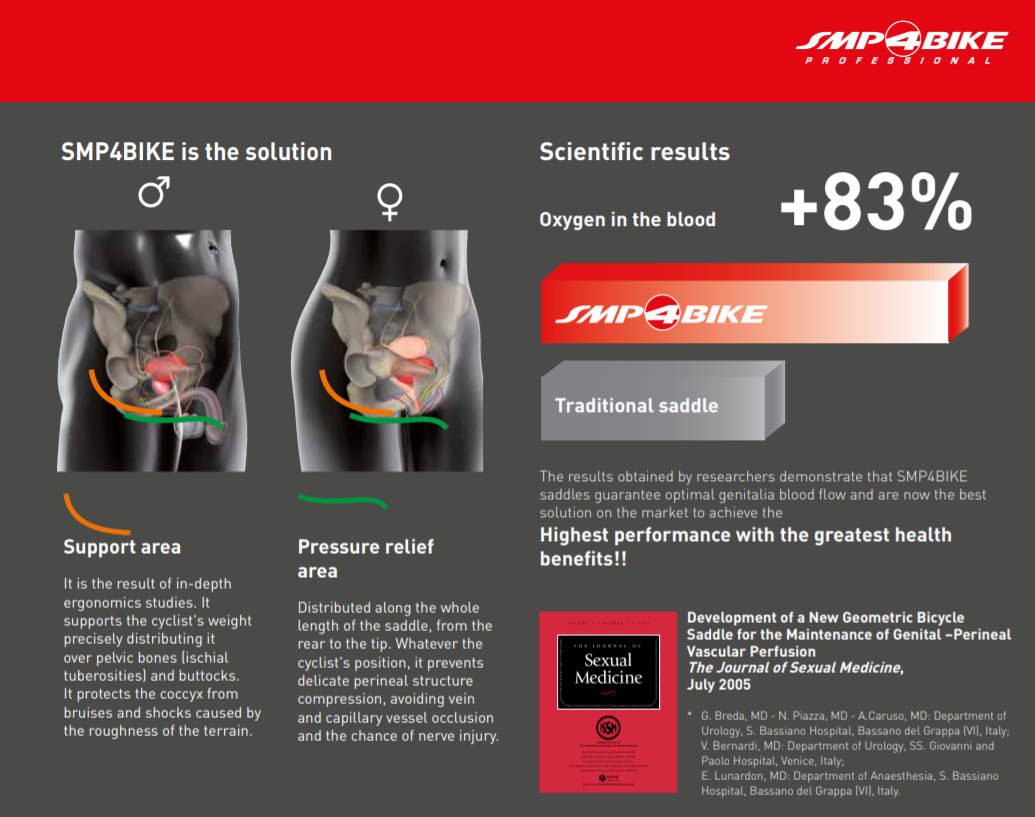
Choosing an SMP road saddle
The Avant isn’t the latest saddle from Selle SMP, but it’s one of their more popular models in the middle-ground of the range. In other words, they make narrow carbon racing saddles with no padding – and super-wide cruiser-type saddles, and the Avant lies roughly in the middle of this continuum. It’s fairly wide for a performance saddle at 154mm (rear width), and has the highest level of padding in the SMP Professional range.
Selle SMP has an interesting method of choosing the proper saddle: Your pants size. That’s right – they don’t use sit bone width, flexibility tests, or anything else. To be honest, having used so many different systems, I can’t say that this is any worse than anything else.
Based on that chart, I shouldn’t really be using the Avant (I wear pants with a 32 or 33-inch waist). However, I have a preference for wide-ish saddles, and those with a decent amount of padding. I had tried some other saddles up to 145mm wide, and was curious to go a bit wider. SMP allowed me to demo both the Avant and Plus models, but I found that the Plus was just a bit too wide – causing a minor amount of chafing due to the slightly wider nose. The take-home: You can use their chart to get in the ballpark, but there’s nothing like trying it for yourself.
While they say the Avant is in the highest level category of padding, the average non-cyclist would likely call it quite firm. I call it a “medium” to “medium-high” level of padding in the grand scheme of performance-oriented saddles. Note that SMP recreational saddles are sold in much softer varieties.
Setup and Fit
Setup of the saddle was straightforward. I install saddles using a simple method: 1) Measure from the widest point of the seat to the center of the stem clamp (on a saddle I’m happy with). 2) Measure the height. Then I remove the old saddle.
When installing the new seat, I simply replicate these measurements. It usually gets me about 90% of the way there, with only minor tweaks necessary.
Once you ride enough saddles, you’ll realize that there is very little consistency between manufacturers in terms of the relationship between the rails and the top of the seat. What I mean by that is – where does the max saddle width lie? How sharp is the curvature from front-to-back? And how do these relate to the rails underneath?
Having ridden a few SMPs, I’ve found that I scoot them quite far forward on the rails compared to most other brands. That’s neither good nor bad – this is just a Public Service Announcement. When in doubt, go for a zero setback seatpost. As a comparison, here is the same bike and seat post set up with a PRO Stealth from Shimano:
On the Avant, I ended up 5-10mm away from the rear max line on the rails – versus being 5mm past the front max line on the PRO Stealth.
Ride Impressions & Actual Weight
SMP quotes 365 grams for the Avant with stainless rails, or 315 grams for the version with oval carbon rails. My stainless model clocked in at 361 grams, 4 less than the quoted amount. Comfort weenies like me won’t care, but weight weenies should look to the SMP models with carbon construction and thin padding.
I used the Avant for a period of roughly six months on my Surly Midnight Special. The quick summary is this: It’s the most comfortable road saddle I’ve ever used. Of course, I haven’t tried every saddle on the planet, and I’m always open to finding something better in the future… but for now – this is it. While I used padded cycling shorts for most rides, it’s comfortable enough for short jaunts around the neighborhood in street clothes.
Overall, I like having full support with the wide rear end, along with a decent amount of padding. However, my favorite part is the overall curvaceous nature of the saddle – no sharp edges or pressure points of any kind. I’m not flexible by nature, and something about flat saddles doesn’t work as well for me (typically causing pressure points under my sit bones). The Avant evenly distributes my weight, and I never get saddles sores. It was an experience of “set, ride, and forget” – exactly what I want out of a saddle.
As for their health claims, I don’t have the equipment to verify or refute, but I experienced no numbness or any other problems “down there”.
The only tricky part was getting the tilt of the saddle figured out, since there aren’t any flat surfaces on the saddle. The center of the saddle has a “scoop” to it, looking at the front-to-back profile. It took one or two rides to decide exactly how I wanted to angle it. Once that was set, I left the saddle essentially untouched for the remainder of the test period.
The Avant sells for $260 for the standard version, or $400 for the carbon rail version. There’s a variety of colors, from classic black or white, to red, Bianchi green, and even neon yellow. If you’re in the US, SMP is available through bike stores that purchase from Albabici, an importer for Italian bike parts on the west coast. Otherwise, check out SMP at the link below.

